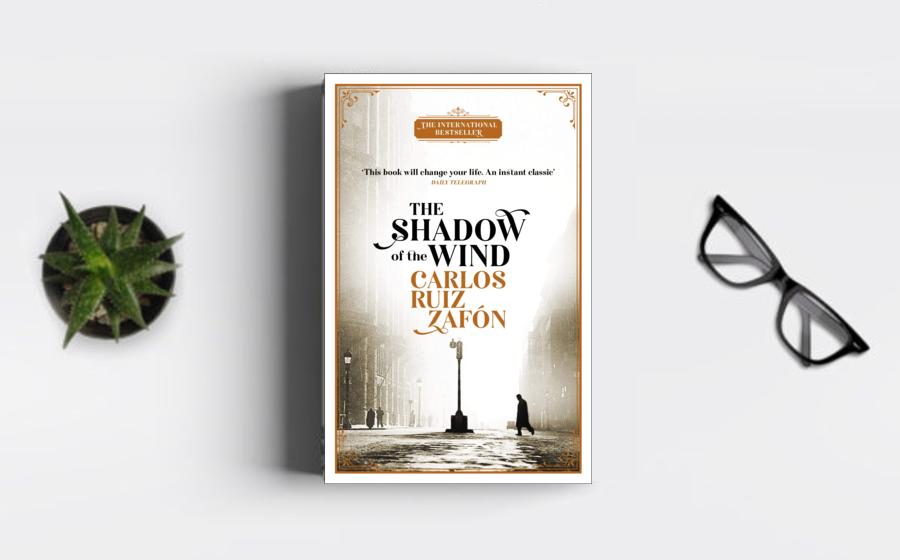"The Shadow of the Wind" is a spellbinding journey
into the heart of postwar Barcelona, a labyrinthine tale
that intertwines love, mystery, and the transformative
power of literature. Published in 2001, this novel has
captivated readers worldwide with its lush prose,
intricate plotting, and homage to the written word. In
this review, we explore the novel's thematic richness,
its evocative portrayal of characters and setting, and
the enduring allure that cements it as one of the top
books of all time.
"The Shadow of the Wind" is
not merely a story set in postwar Barcelona; it
transforms the city into a living, breathing character. Zafon's
evocative descriptions paint a vivid portrait of the
city's streets, hidden corners, and mysterious alleys.
Against the backdrop of a Barcelona scarred by the
Spanish Civil War, readers are immersed in a world where
every building, bookshop, and library possesses a
history waiting to be uncovered.
The Cemetery of
Forgotten Books, a secret labyrinthine library
introduced early in the novel, becomes a symbolic nexus
where stories intersect, secrets are guarded, and
literary treasures await discovery. Zafon's meticulous
rendering of postwar Barcelona contributes to the
novel's immersive quality, inviting readers to navigate
its streets and delve into its hidden recesses.
At its core, "The Shadow of the Wind" is a love letter
to literature. The novel is steeped in a reverence for
books, their power to shape lives, and the profound
impact of storytelling. The protagonist, Daniel Sempere,
discovers a novel by Julian Carax in the Cemetery of
Forgotten Books, setting off a chain of events that will
shape his life and the lives of those around him.
Zafon explores the transformative power of
literature, examining how books become companions,
mentors, and solace in times of joy and despair. Through
the characters' relationships with books, the novel
celebrates the magic of storytelling, the universality
of literary themes, and the enduring resonance of words
on paper.
The portrayal of the Sempere & Sons
bookshop, passed down through generations, serves as a
poignant reminder of the cultural importance of
independent bookstores and the role they play in
preserving literary heritage. Zafon's narrative becomes
a vessel for bibliophiles to revel in the enchanting
world of books, fostering a connection between readers
and the characters who share their passion.
"The
Shadow of the Wind" is not merely a celebration of
literature; it is a masterfully crafted mystery that
unfolds with the precision of a well-woven tapestry. The
discovery of Julian Carax's novel sets in motion a
complex narrative that spans decades, intertwining the
fates of characters in unexpected ways. Zafon's
storytelling prowess lies in his ability to layer
mystery upon mystery, revealing hidden connections and
untangling the threads of a larger narrative.
As
Daniel Sempere embarks on his quest to unearth the
mysteries surrounding Carax's life, readers are drawn
into a labyrinth of deception, betrayal, and forbidden
love. The novel masterfully balances the suspense of a
thriller with the depth of character-driven
storytelling, creating an immersive reading experience
that keeps the pages turning.
The enigmatic
figure of Lain Coubert, a character from Carax's novel
who seems to materialize in the real world, blurs the
lines between fiction and reality. Zafon's narrative
blurs genres, seamlessly transitioning from historical
fiction to mystery, Gothic romance, and even elements of
magical realism. This genre fluidity contributes to the
novel's timeless appeal, making it a work that defies
easy categorization.
Zafon populates his novel
with a rich tapestry of characters, each contributing to
the unfolding drama in their unique way. Daniel Sempere,
the young protagonist, undergoes a coming-of-age journey
that parallels the larger mysteries he unravels. His
relationships with his father, Fermin Romero de Torres,
and love interest Beatriz play pivotal roles in shaping
his character and the trajectory of the narrative.
Fermin Romero de Torres, a former prisoner with a
mysterious past, emerges as a charismatic and complex
character. His wit, resilience, and unwavering loyalty
to Daniel add depth to the novel, infusing moments of
humor and camaraderie into the overarching mystery.
Julia and Isaac Aldaya, the tragic lovers from
Carax's novel, contribute a layer of Gothic romance to
the narrative. Their ill-fated love story echoes through
the decades, leaving an indelible mark on the characters
who come into contact with their tale.
The
malevolent figure of Inspector Fumero serves as the
novel's antagonist, embodying the darkness that lingers
in the wake of war and political upheaval. His pursuit
of power and control creates a sense of looming menace,
adding tension to the narrative.
The characters
in "The Shadow of the Wind" are intricately connected,
their lives woven together by the threads of fate and
the shared love of literature. Zafon's ability to
breathe life into each character contributes to the
novel's emotional resonance, fostering a sense of
empathy and connection between readers and the
individuals who populate its pages.
Beneath the
surface of mystery and intrigue, "The Shadow of the
Wind" explores profound themes of love, loss, and the
possibility of redemption. The novel grapples with the
aftermath of war, the impact of political ideologies on
individual lives, and the enduring scars that shape a
generation.
The theme of forbidden love echoes
through the narrative, manifesting in the relationships
between Carax and his lover, Daniel and Beatriz, and
even Fermin's clandestine affairs. Zafon examines the
consequences of societal norms and political upheaval on
personal relationships, highlighting the resilience of
love in the face of adversity.
Loss is a
pervasive theme, with characters grappling with the
absence of loved ones, the destruction wrought by war,
and the haunting specter of past traumas. The Cemetery
of Forgotten Books becomes a metaphorical space where
lost stories, memories, and lives find a semblance of
immortality.
Redemption, however elusive, becomes
a beacon of hope throughout the novel. Characters seek
redemption for past mistakes, the chance to right
wrongs, and the opportunity to forge new beginnings. Zafon's
narrative suggests that, even in the darkest corners of
history, the possibility of redemption remains a potent
force that can shape the course of individual destinies.
"The Shadow of the Wind" is a literary masterpiece that transcends genres, weaving a tapestry of mystery, love, and the transformative power of literature. Carlos Ruiz Zafon's evocative prose, richly drawn characters, and intricate plotting contribute to the novel's status as one of the top books of all time.






